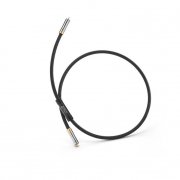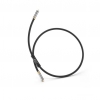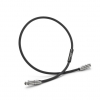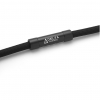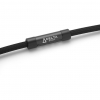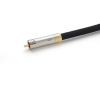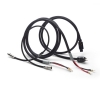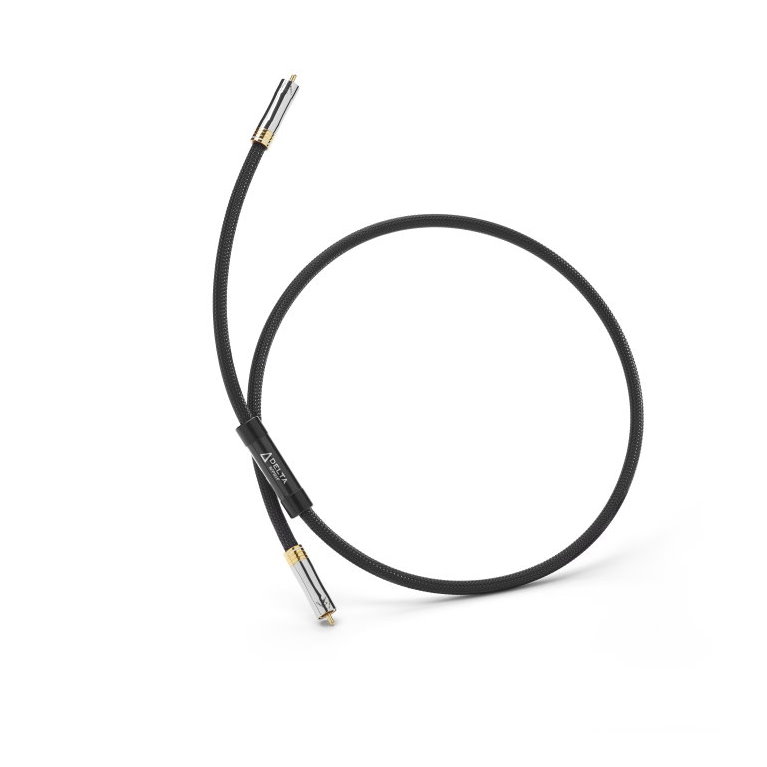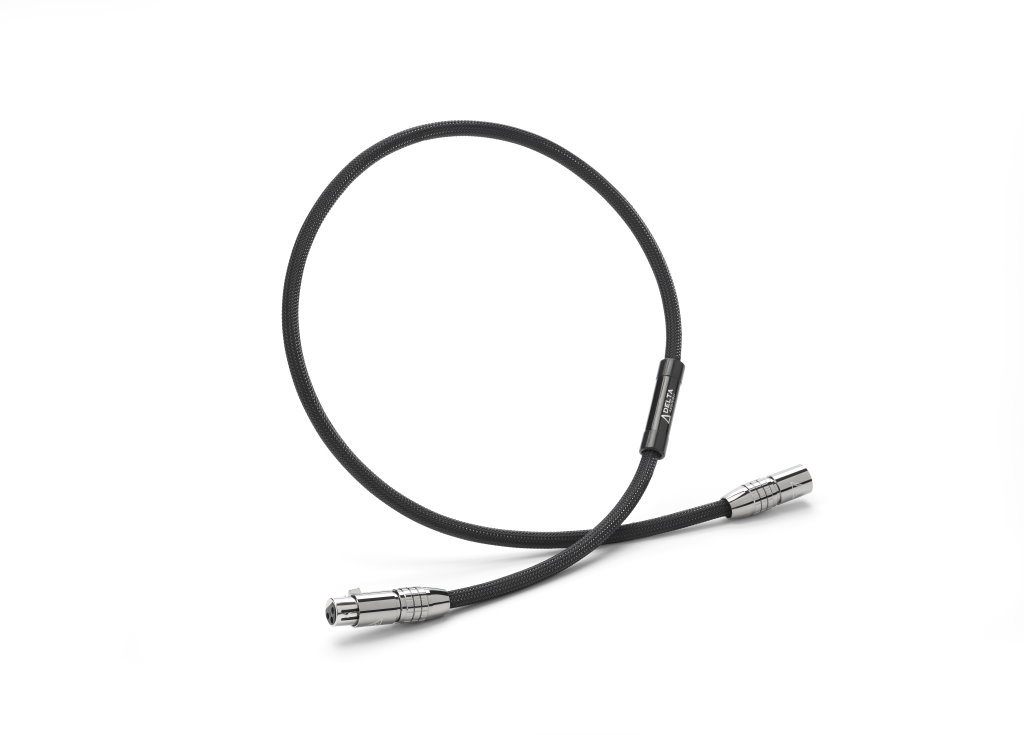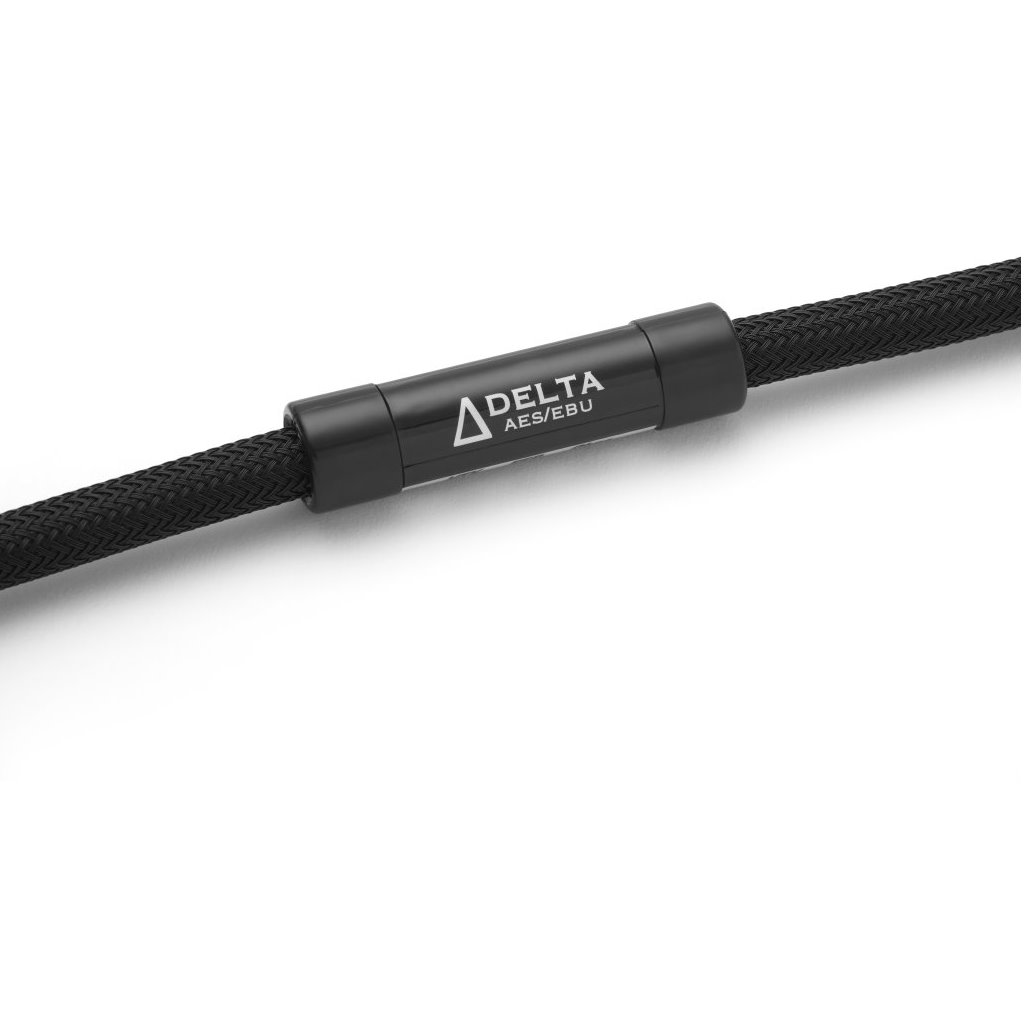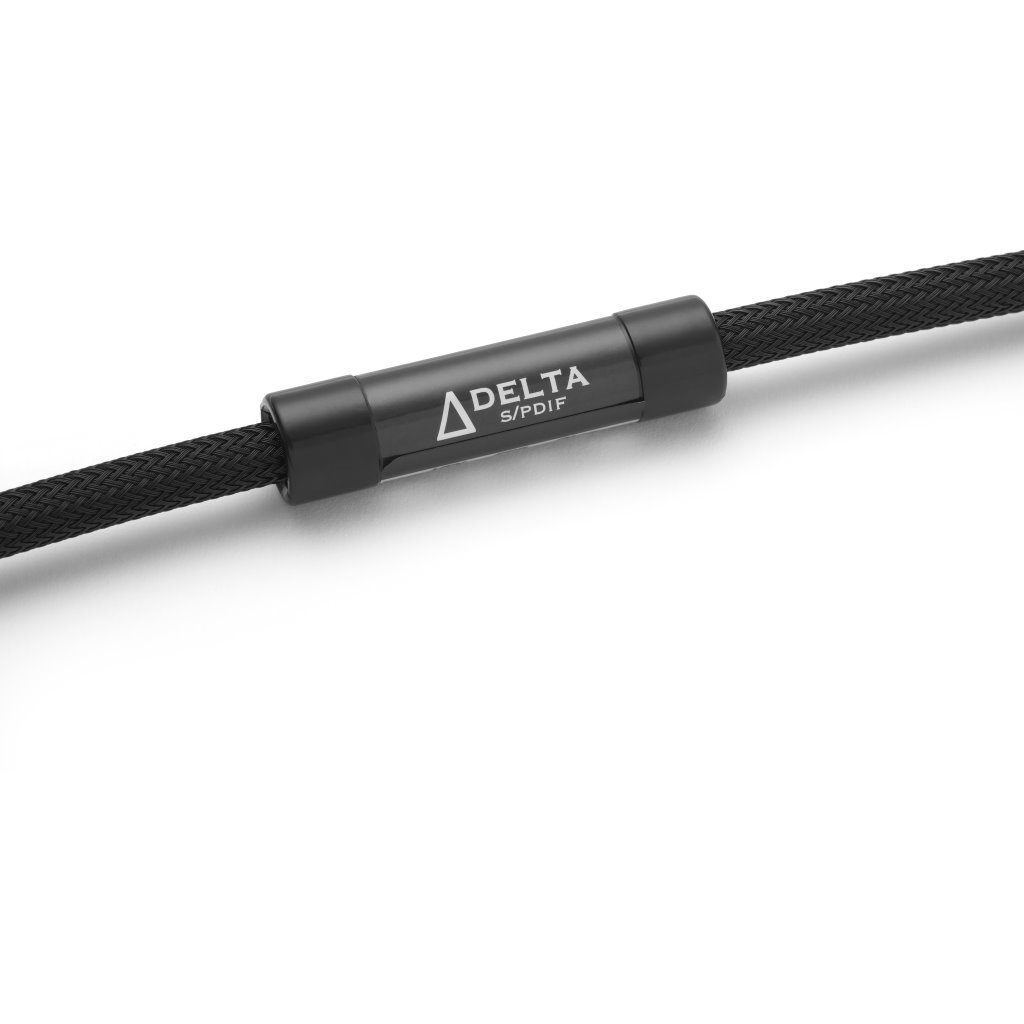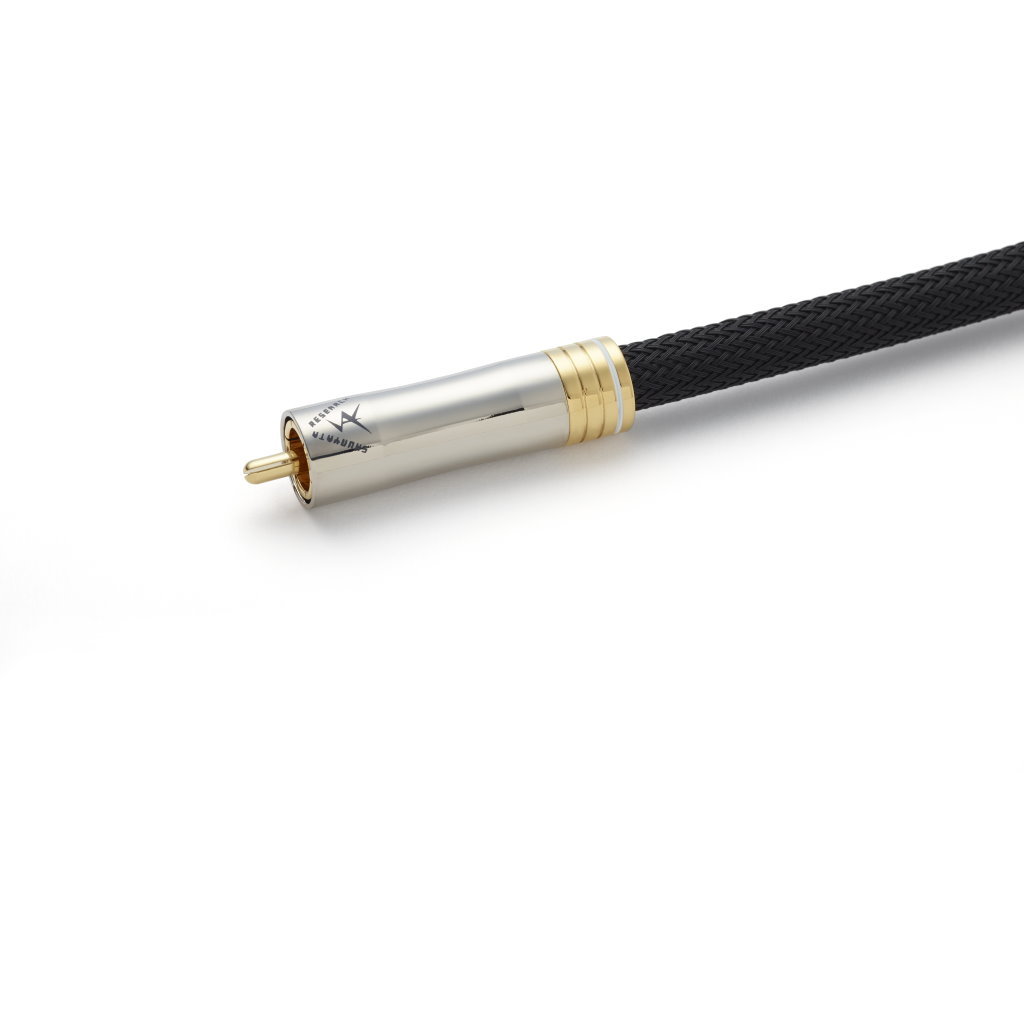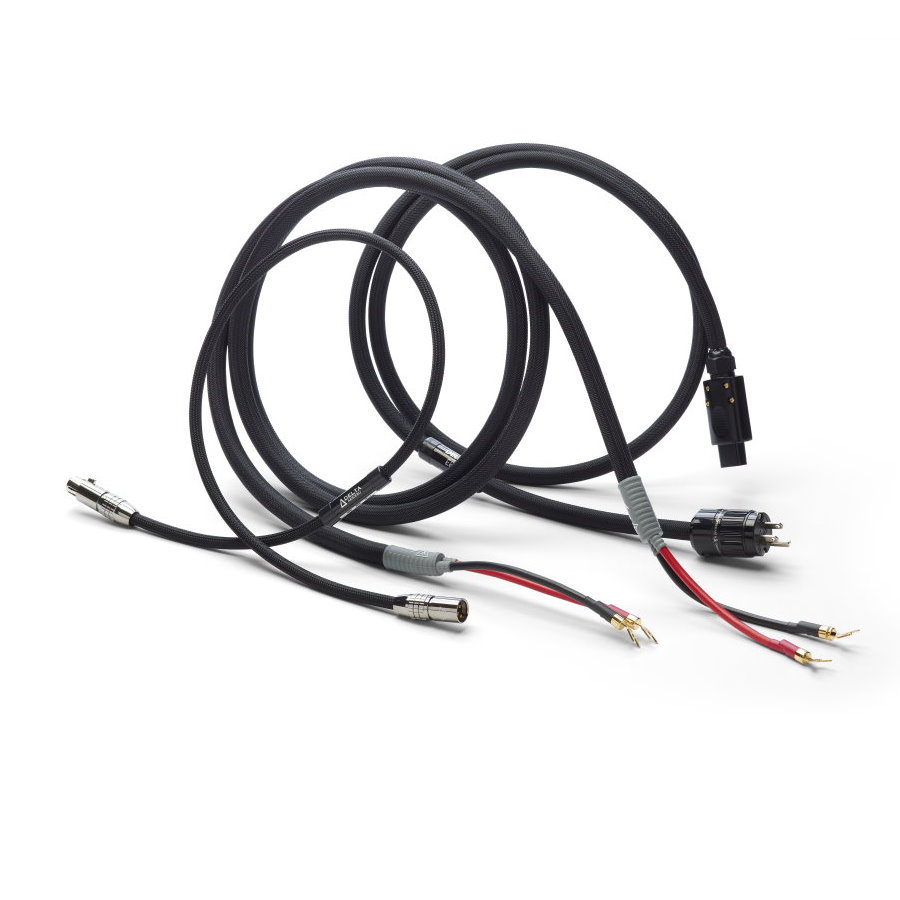- AUDIO ONE-TO-ONE Call Now: 210-805-9927
- Contact
- Register
- My Account
Shunyata Delta Series Digital Cables
Shunyata Delta Series Digital Cables
Shunyata Delta Series Digital Cables
Description

MY TAKE: Can’t think of a product line I enjoy selling more than Shunyata. The reason is simple – people love it! Virtually regardless of the system, Shunyata products consistently offer extraordinary performance and outstanding value. Let us introduce you to Shunyata products and unlock the full potential of your system. - Galen Carol
DELTA SERIES builds upon the Venom Series high-quality features with advanced fluorocarbondielectrics, larger VTXTM conductors, and superior connectors terminated using a high-tech
sonic-welding process. The Delta power cables include Shunyata Research’s own CopperCONN® connectors made with pure copper contacts.
The Delta is also the first in Shunyata Research’s NR Series of power cables to incorporate on-board CCITM noise reduction filters. Finally, the Kinetic Phase Inversion Process
abbreviated KPIPTM, makes its first appearance in the Delta Series. KPIPTM is more than just another break-in box; it is a truly transformative conditioning process that goes beyond simple burn-in.
KPIPTM not only makes time consuming burn-in a thing of the past; it elevates the performance of the products to which it is applied.
Digital Cables -
High-speed digital transmission is very different from audio frequency signal transmission and requires a different knowledge base and design criteria. Audio cable signal transmission is governed by the principles of inductance, capacitance, and resistance. By contrast, high-speed digital signals are governed by a principle known as ‘transmission line theory’. The performance of a transmission line is governed by the characteristic impedance of the cable. Certain types of cable require a specific characteristic impedance to achieve optimal performance — for instance, cable TV coaxial cables are 75 ohms, while test equipment cables require 50 Ohm cables. Modern audio and entertainment systems may have multiple digital connections, each with potentially different characteristic impedances. While the characteristic impedance is a critical factor in the optimal performance of digital cables, our research also indicates that the precision with which a digital cable is constructed has a significant impact on its performance.
Shunyata Research digital cables are produced using a Precision Matched Z concept. This dictates that tolerances of the conductor surface, dielectric extrusion, and the precision of the braided shield are held to smaller variances. To achieve these tight tolerances, the extrusion and braiding machines must be run at one-quarter speed during the manufacturing process. The result is better performance through a reduction of cable-induced ‘signal jitter’.Superficially, digital cables may look the same as analog cables. For example, a S/PDIF cable can be terminated with RCA connectors, much like analog interconnects. Because the terminations appear the same, analog interconnects could be used as a substitute for a digital cable; but since it has not been designed with the correct characteristic impedance, the performance will suffer.
Delta S/PDIF -
Delta Series S/PDIF uses the finest Ohno continuous cast copper and VTXTM (hollow core) conductors. Silver plated braided shields ensure RFI/EMI immunity. Shunyata Research’s exclusive KPIPTM process eliminates lengthy burn-in issues.
Delta AES/EBU -
Delta Series AES/EBU features a true balanced, twisted pair design. Ohno continuous cast copper, VTXTM (hollow core) conductors with expensive fluorocarbon dielectrics and braided shielding. Shunyata Research’s exclusive KPIPTM process eliminates lengthy burn-in issues.
Shunyata Technology – Cable Products
Highest Purity Copper -
Shunyata Research uses only the highest purity of copper available for the production of its wire products. OFE Alloy 101 or C10100 is the highest grade of copper with a minimum 99.99% purity and a conductivity rating of 101% IACS. OFE stands for oxygen-free electrolytic and supersedes the term OFHC (oxygen-free high conductivity). C10100 is the only grade of copper that comes with a written certification of purity. Certified by ASTM F68 C10100.
Single Crystal Technology -
Ohno wire, also called PCOCC was invented in 1986 by professor Atsumi Ohno of the Chiba Institute of Technology in Japan. Copper wire is created by an extrusion process that pulls a rod of cold copper through a small orifice which creates multiple crystalline boundaries. By contrast, Ohno wire is made by a process using heated molds that cast a wire to form a single crystalline structure. Ohno wire is well known for its exceptionally pure, grain-free sonic qualities.
VTX Conductor Design -
Shunyata Research’s exclusive VTXTM conductors are made in the shape of hollow tubes. Since current can ‘only’ travel through the outer rim on the wire, there are no skin effects or random eddy currents. VTXTM conductors are made from pure OFE C10100 or Ohno (single crystal) copper.
KPIP Conditioning -
KPIPTM (Kinetic Phase Inversion Process) was developed by Caelin Gabriel after years of research into the underlying causes of various effects such as burn-in, wire directionality and the effects of cryogentic treatment. He discovered that there was an underlying core principle that burn-in and cryogenics only “partially” addressed. Once the governing principle was understood it became possible to create a processing technique and machine that could virtually eliminate the need for burn-in and cryogenic treatment.Unique Conductor -
ArNi® is a type of wire created by Shunyata Research designed to be the finest quality wire available for audio purposes. It begins with the highest purity of copper available – OFE C0100 or Ohno (single crystal). Then it is formed in virtual hollow tubes eliminating skin effects and eddy current distortions. In addition, the wire undergoes our proprietary KPIPTM process.
Patented ΞTRON® -
ΞTRON® is a technology developed by Shunyata Research that prevents dielectric absorption and re-radiation in signal transmission. It requires a special type of conductor that has two signal paths and an electric field compensation circuit that creates a cancelation signal that prevents the insulation from developing a charge. ΞTRON® cables preserve the integrity of the source signal even when using very long runs of cable. Patent US 8,912,436, Patent Ch ZL201180047344.2.
Custom Connectors -
Many audiophile grade connectors are made from brass or bronze. While some may get a plating of silver, gold or rhodium, the majority of the current is carried by the contact’s base-metal. CopperCONN® connectors contain pure copper contacts which has a much higher conductivity that brass. The difference in performance is clearly audible.
Precision Matching -
Shunyata Research digital cables are produced using a Precision Matched Z (PMZ) concept. This means that tolerances of the conductor surface, dielectric extrusion, and the precision of the braided shield are held to minute variances. To achieve these tight tolerances, the extrusion and braiding machines must be run at one-quarter speed during the manufacturing process. The result is better performance through a reduction of cable-induced ‘signal jitter’. (Note: Z means impedance)
Superior Termination Techniques -
Crimping, soldering, brazing and cold soldering are all inferior methods of joining two wires or terminals together. Sonic welding uses high energy sonic waves to literally join two metals together at a molecular level. There is no solder or intermediary metals involved in the process.

Shunyata Delta Series Digital Cables
Description

MY TAKE: Can’t think of a product line I enjoy selling more than Shunyata. The reason is simple – people love it! Virtually regardless of the system, Shunyata products consistently offer extraordinary performance and outstanding value. Let us introduce you to Shunyata products and unlock the full potential of your system. - Galen Carol
DELTA SERIES builds upon the Venom Series high-quality features with advanced fluorocarbondielectrics, larger VTXTM conductors, and superior connectors terminated using a high-tech
sonic-welding process. The Delta power cables include Shunyata Research’s own CopperCONN® connectors made with pure copper contacts.
The Delta is also the first in Shunyata Research’s NR Series of power cables to incorporate on-board CCITM noise reduction filters. Finally, the Kinetic Phase Inversion Process
abbreviated KPIPTM, makes its first appearance in the Delta Series. KPIPTM is more than just another break-in box; it is a truly transformative conditioning process that goes beyond simple burn-in.
KPIPTM not only makes time consuming burn-in a thing of the past; it elevates the performance of the products to which it is applied.
Digital Cables -
High-speed digital transmission is very different from audio frequency signal transmission and requires a different knowledge base and design criteria. Audio cable signal transmission is governed by the principles of inductance, capacitance, and resistance. By contrast, high-speed digital signals are governed by a principle known as ‘transmission line theory’. The performance of a transmission line is governed by the characteristic impedance of the cable. Certain types of cable require a specific characteristic impedance to achieve optimal performance — for instance, cable TV coaxial cables are 75 ohms, while test equipment cables require 50 Ohm cables. Modern audio and entertainment systems may have multiple digital connections, each with potentially different characteristic impedances. While the characteristic impedance is a critical factor in the optimal performance of digital cables, our research also indicates that the precision with which a digital cable is constructed has a significant impact on its performance.
Shunyata Research digital cables are produced using a Precision Matched Z concept. This dictates that tolerances of the conductor surface, dielectric extrusion, and the precision of the braided shield are held to smaller variances. To achieve these tight tolerances, the extrusion and braiding machines must be run at one-quarter speed during the manufacturing process. The result is better performance through a reduction of cable-induced ‘signal jitter’.
Superficially, digital cables may look the same as analog cables. For example, a S/PDIF cable can be terminated with RCA connectors, much like analog interconnects. Because the terminations appear the same, analog interconnects could be used as a substitute for a digital cable; but since it has not been designed with the correct characteristic impedance, the performance will suffer.
Delta S/PDIF -
Delta Series S/PDIF uses the finest Ohno continuous cast copper and VTXTM (hollow core) conductors. Silver plated braided shields ensure RFI/EMI immunity. Shunyata Research’s exclusive KPIPTM process eliminates lengthy burn-in issues.
Delta AES/EBU -
Delta Series AES/EBU features a true balanced, twisted pair design. Ohno continuous cast copper, VTXTM (hollow core) conductors with expensive fluorocarbon dielectrics and braided shielding. Shunyata Research’s exclusive KPIPTM process eliminates lengthy burn-in issues.
Shunyata Technology – Cable Products
Highest Purity Copper -
Shunyata Research uses only the highest purity of copper available for the production of its wire products. OFE Alloy 101 or C10100 is the highest grade of copper with a minimum 99.99% purity and a conductivity rating of 101% IACS. OFE stands for oxygen-free electrolytic and supersedes the term OFHC (oxygen-free high conductivity). C10100 is the only grade of copper that comes with a written certification of purity. Certified by ASTM F68 C10100.
Single Crystal Technology -
Ohno wire, also called PCOCC was invented in 1986 by professor Atsumi Ohno of the Chiba Institute of Technology in Japan. Copper wire is created by an extrusion process that pulls a rod of cold copper through a small orifice which creates multiple crystalline boundaries. By contrast, Ohno wire is made by a process using heated molds that cast a wire to form a single crystalline structure. Ohno wire is well known for its exceptionally pure, grain-free sonic qualities.
VTX Conductor Design -
Shunyata Research’s exclusive VTXTM conductors are made in the shape of hollow tubes. Since current can ‘only’ travel through the outer rim on the wire, there are no skin effects or random eddy currents. VTXTM conductors are made from pure OFE C10100 or Ohno (single crystal) copper.
KPIP Conditioning -
KPIPTM (Kinetic Phase Inversion Process) was developed by Caelin Gabriel after years of research into the underlying causes of various effects such as burn-in, wire directionality and the effects of cryogentic treatment. He discovered that there was an underlying core principle that burn-in and cryogenics only “partially” addressed. Once the governing principle was understood it became possible to create a processing technique and machine that could virtually eliminate the need for burn-in and cryogenic treatment.
Unique Conductor -
ArNi® is a type of wire created by Shunyata Research designed to be the finest quality wire available for audio purposes. It begins with the highest purity of copper available – OFE C0100 or Ohno (single crystal). Then it is formed in virtual hollow tubes eliminating skin effects and eddy current distortions. In addition, the wire undergoes our proprietary KPIPTM process.
Patented ΞTRON® -
ΞTRON® is a technology developed by Shunyata Research that prevents dielectric absorption and re-radiation in signal transmission. It requires a special type of conductor that has two signal paths and an electric field compensation circuit that creates a cancelation signal that prevents the insulation from developing a charge. ΞTRON® cables preserve the integrity of the source signal even when using very long runs of cable. Patent US 8,912,436, Patent Ch ZL201180047344.2.
Custom Connectors -
Many audiophile grade connectors are made from brass or bronze. While some may get a plating of silver, gold or rhodium, the majority of the current is carried by the contact’s base-metal. CopperCONN® connectors contain pure copper contacts which has a much higher conductivity that brass. The difference in performance is clearly audible.
Precision Matching -
Shunyata Research digital cables are produced using a Precision Matched Z (PMZ) concept. This means that tolerances of the conductor surface, dielectric extrusion, and the precision of the braided shield are held to minute variances. To achieve these tight tolerances, the extrusion and braiding machines must be run at one-quarter speed during the manufacturing process. The result is better performance through a reduction of cable-induced ‘signal jitter’. (Note: Z means impedance)
Superior Termination Techniques -
Crimping, soldering, brazing and cold soldering are all inferior methods of joining two wires or terminals together. Sonic welding uses high energy sonic waves to literally join two metals together at a molecular level. There is no solder or intermediary metals involved in the process.


